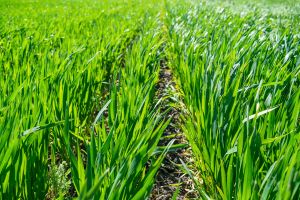Regenerative Agriculture: The Crunch Year
The crunch year for Regenerative Agriculture, By Kevin Kennedy, partner at Burges Salmon independent UK law firm.

Regenerative agriculture is seen as a broad church. It encompasses a whole number of different practices which broadly have at their heart the enhancement of soil fertility. That includes a focus on keeping the soil covered throughout the year, keeping living roots in the ground, a significant diminution in the chemical intervention, and the integration of livestock into arable systems.
Even trying to describe it, however, is open to question. For many, it is more of an “approach” or an “attitude” to farming rather than a particular prescribed process that must be followed. It is certainly not a certified and regulated standard that can be compared to organic production.
But this year seems likely to test that. Just hearing “regenerative” tagged to the front of “agriculture” so often provokes a fear that this may just be a bandwagon. As regenerative agriculture develops, however, the issue of its credibility as a process, and what barriers there are to producers calling themselves “regenerative” will come to the fore.
This was made apparent by one of the partner sessions at the Oxford Farming Conference in January, hosted by the National Institute for Agricultural Botany called “Regenerative agriculture – hype or hope?”. NIAB’s own experience was presented by its head of farming systems, Elizabeth Stockdale, who emphasised the broad church approach to regenerative agriculture. But most of the session involved a presentation from Antony Yousefian of The First Thirty Ventures, an investor focused on early-stage agri-tech companies with a regenerative focus.
He spoke of various projects that his organisation was involved in and shared slides showing research around regenerative agriculture. This is the sort of material that can be expected to be put to venture capitalists and other investors, all of whom are circling this area, seeing the potential for systematic change.
 In front of our eyes was apparent evidence of the health benefits of regenerative agriculture, including a comparison between omega 3 and omega 6 levels in conventional and regeneratively produced grain. The obvious conclusion was that regeneratively produced food is better for you.
In front of our eyes was apparent evidence of the health benefits of regenerative agriculture, including a comparison between omega 3 and omega 6 levels in conventional and regeneratively produced grain. The obvious conclusion was that regeneratively produced food is better for you.
But the moment that is said, you need to be able to clarify what regenerative agriculture actually is, and what it is not. You cannot have a range of potential practices, some of which may be easy to integrate and some of which may involve wholesale re-engineering of a farm, and say that the claimed benefits apply to them equally. There has to be more rigour around what regenerative agriculture actually means if the benefits of its output are to be established and promoted, perhaps for a premium price.
The assumption is that regenerative agriculture will grow in recognition.
An AHDB report in July 2021 evidenced a low level of consumer current awareness of regenerative agriculture. But while only 14% of British consumers had heard of regenerative agriculture at the time, the AHDB predicted awareness would grow “as consumer concern for the environment increases, and brands and retailers begin to use the term more frequently”. Anecdotally, that is happening already
So, if regenerative agriculture is to have credibility as a concept, a collective decision will need to be made as to whether it stays as it is – a producer-focused issue – or starts to become something which purports to offer qualitative benefits in its product.
If the latter option is the destination, then some form of verification or certification is bound to be required.
To stay informed on all the latest news and advice from within the industry, subscribe to Farm Diversity magazine today.
- Log in to post comments

